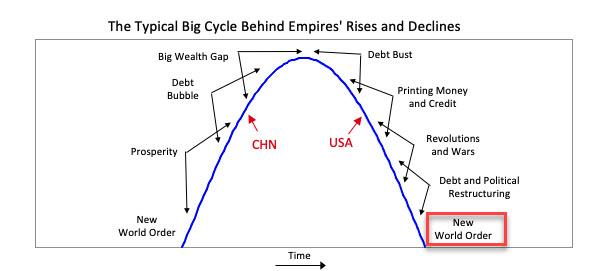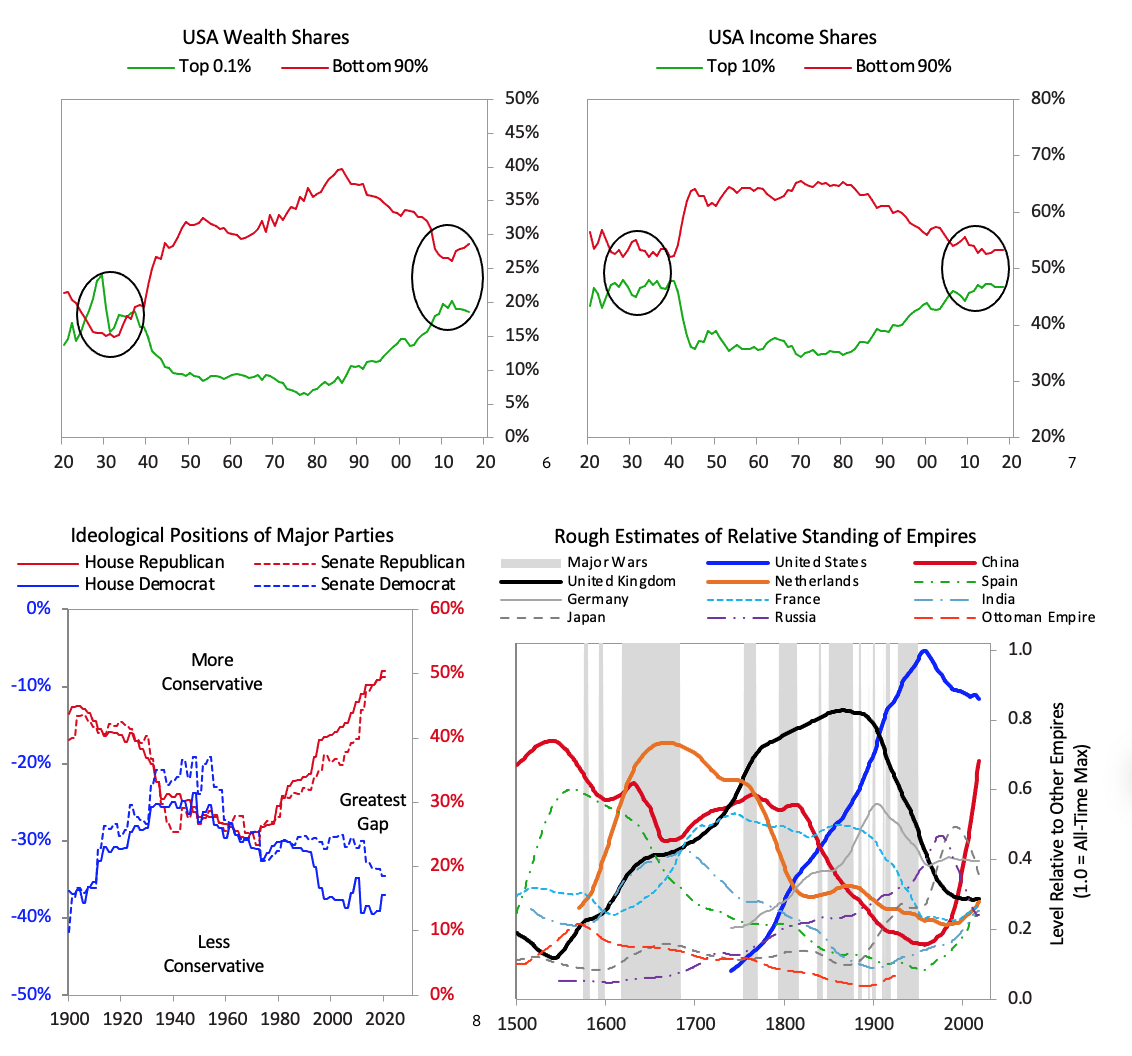“That’s A Dire Warning”: Dalio’s Chart Hints At What Beijing Is Really Up To
Tyler Durden
Tue, 12/01/2020 – 21:25
By Ye Xie, Bloomberg macro commentator
Another day, another stock record. The S&P 500 soared to a fresh all-time high on Tuesday, while the yield curve steepened on optimism about more fiscal stimulus and the imminent deployment of vaccines. The seeming disconnect between financial markets and the economy is kind of surreal, considering that 11 million people remain unemployed and the virus is spiraling out of control.
The fact that U.S. policy makers are still pedal-to-the-metal with monetary stimulus stands in sharp contrast to China, where officials have set their sights on an exit from loose policy. Consider recent events:
-
Guo Shuqing, chairman of the China Banking and Insurance Regulatory Commission, described China’s property market as the biggest “gray rhino” – an obvious yet ignored financial risk.
-
Guo also pledged to impose “special and innovative regulatory measures” on financial technology behemoths such as Jack Ma’s Ant Group. The recent regulation changes have essentially put these fin-tech companies under the similar supervision umbrella as traditional banks to avoid excessive leverage.
-
Beijing has allowed a number of SOEs to default, breaking the implicit government guarantee.
-
PBOC Governor Yi Gang vowed to avoid monetizing government debt. In addition, officials have said low interest rates contributed to social inequality.
Clearly, there’s a sense of urgency to address financial risks and close the gap between markets and the economy. In the meantime, the buzz in Beijing is that the financial industry should serve the real economy and people.
What China is doing makes perfect sense in the context of the big economic cycle described by Ray Dalio. In his latest essay published Tuesday, Bridgewater’s founder showed that China is in the midst of a debt bubble and the beginning of widening wealth gap. Apparently, China wants to tackle both before it’s too late.
In contrast, the U.S. has passed the peak of its economic power, settling into the stage of money printing after the burst of the debt bubble, according to Dalio.
“It is in this stage when there are bad financial conditions and intensifying conflict,” wrote Dalio. “Classically this stage comes after periods of great excesses in spending and debt and the widening of wealth and political gaps and before there are revolutions and civil wars. United States is at a tipping point in which it could go from manageable internal tension to revolution and/or civil war.”
That’s a dire warning. Apparently, President Xi Jinping is trying to avoid the same path.

